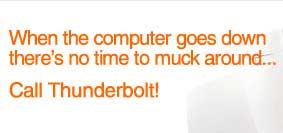
We specialise in fixing serious computer problems
for our clients. But there are many simple computer problems
that you can fix yourself!
This section of our site outlines what
these simple problems are and what
you can do to fix
them if they happen on your machine. We regularly add to this
section as new FAQs emerge - so you may want to bookmark it if
you find our advice helpful (just press CTRL+D).







